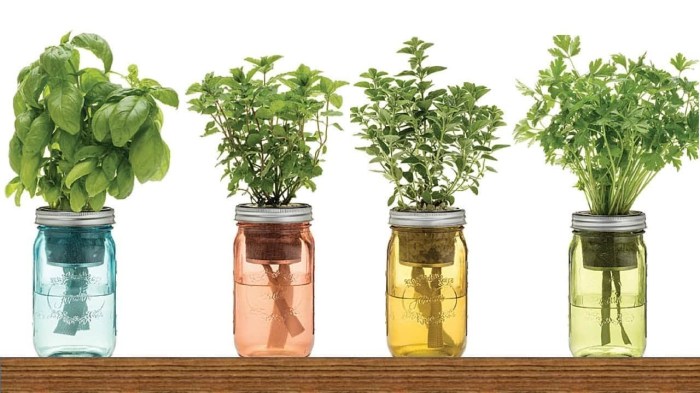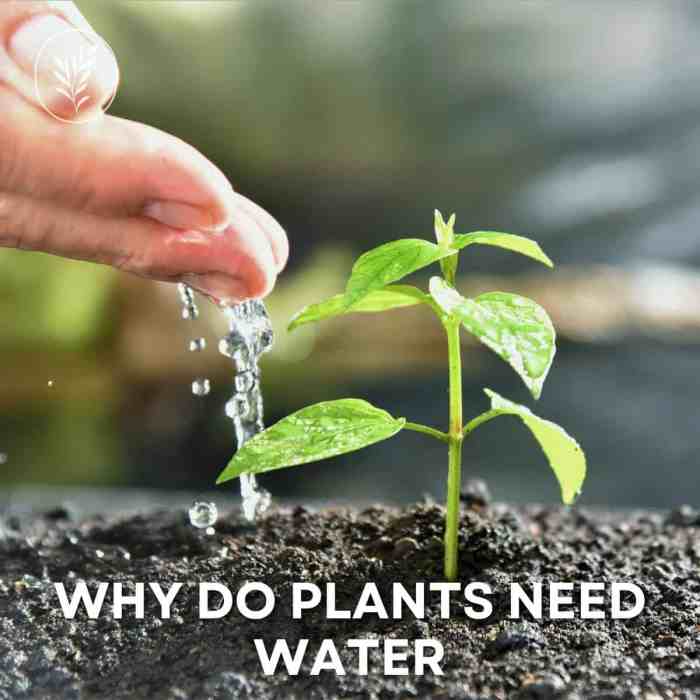Why Do Plants Need Water to Grow?
The Crucial Role of Water in Plant Growth: Why Do Plants Water To Grow
Why do plants water to grow – Water is fundamental to plant life, acting as a solvent, transport medium, and participant in crucial metabolic processes. Its availability significantly influences all aspects of plant growth, from germination to reproduction. Understanding the multifaceted role of water is key to cultivating healthy and productive plants.
Water Absorption and Transport, Why do plants water to grow

Source: naturalon.com
Plants absorb water primarily through their roots, a process driven by osmosis and facilitated by root hairs that increase surface area. Water moves from the soil, across the root cortex, and into the xylem, the plant’s vascular tissue responsible for water transport. This upward movement is powered by transpiration, the evaporation of water from leaves, creating a negative pressure that pulls water up the xylem.
Herbaceous plants, with less developed vascular systems, rely more heavily on root pressure, while woody plants, with their extensive xylem networks, are more reliant on transpiration pull.
| Xylem Component | Role in Water Transport | Phloem Component | Role in Water Transport |
|---|---|---|---|
| Tracheids | Water conduction; structural support | Sieve tubes | Sugar transport; some water movement |
| Vessels | Efficient water conduction | Companion cells | Support sieve tubes; metabolic functions |
| Xylem parenchyma | Storage; radial water movement | Phloem parenchyma | Storage; radial water movement |
| Fibers | Structural support | Fibers | Structural support |
Water’s Role in Photosynthesis

Source: powerofpositivity.com
Water is a crucial reactant in the light-dependent reactions of photosynthesis. It provides electrons to replace those lost by chlorophyll during the excitation process, preventing photoinhibition. This electron replacement is essential for the continuous production of ATP and NADPH, energy-carrying molecules required for the subsequent light-independent reactions (Calvin cycle).
The overall chemical equation for photosynthesis highlights water’s importance:
6CO2 + 6H 2O + Light Energy → C 6H 12O 6 + 6O 2
Water is oxidized, releasing oxygen as a byproduct, while carbon dioxide is reduced to form glucose, the plant’s primary energy source.
A simplified flowchart illustrating water’s role in photosynthesis:
- Water is split (photolysis) in photosystem II, releasing electrons.
- Electrons are passed along the electron transport chain.
- Proton gradient is established, driving ATP synthesis.
- NADP+ is reduced to NADPH using electrons from the electron transport chain.
- ATP and NADPH are used in the Calvin cycle to synthesize glucose.
Water’s Impact on Plant Cell Structure and Function
Water maintains turgor pressure, the pressure exerted by the cell contents against the cell wall. This pressure is essential for maintaining cell shape and rigidity, contributing to overall plant structure and support. Water deficiency leads to reduced turgor pressure, causing wilting and impairing various cellular functions. Plant cells regulate water balance through mechanisms like osmosis and the control of aquaporins, membrane channels that facilitate water movement.
- High water levels: Optimal turgor pressure, efficient photosynthesis and nutrient transport, robust growth.
- Moderate water levels: Some reduction in turgor pressure, slightly slower growth, but generally healthy.
- Low water levels: Severe turgor pressure loss, wilting, reduced photosynthesis and nutrient uptake, stunted growth, potential cell death.
Water and Nutrient Uptake

Source: homefortheharvest.com
Water acts as a solvent, facilitating the dissolution and absorption of essential nutrients from the soil. These nutrients are then transported throughout the plant via the xylem and phloem, largely through mass flow driven by transpiration. Water availability influences nutrient uptake efficiency; higher water content generally leads to better nutrient absorption, particularly for mobile nutrients.
- Macronutrients (e.g., Nitrogen, Phosphorus, Potassium): Generally require ample water for efficient uptake.
- Micronutrients (e.g., Iron, Zinc, Manganese): Their uptake can also be affected by water availability, though their mobility within the plant may vary.
Example data illustrating the impact of soil water content on nutrient uptake (hypothetical values):
| Soil Water Content (%) | Nitrate Uptake (mg/kg) | Phosphate Uptake (mg/kg) |
|---|---|---|
| 10 | 5 | 2 |
| 20 | 15 | 8 |
| 30 | 25 | 15 |
Water Requirements Across Plant Growth Stages
Plants have varying water requirements throughout their life cycle. Germination demands sufficient water for seed imbibition and the emergence of the seedling. Vegetative growth requires abundant water for cell expansion and leaf development. Flowering and fruiting stages are particularly sensitive to water stress, as inadequate water can reduce flower and fruit production. Plants adapted to arid environments exhibit various strategies such as deep root systems, water storage tissues (e.g., succulents), and reduced leaf surface area to minimize water loss.
A visual representation of plant growth across water availability: A seedling initially shows rapid growth with sufficient water, reaching a peak during vegetative growth. With optimal water, flowering and fruiting are abundant. However, under water stress, growth slows significantly, flowering is reduced or absent, and fruiting is minimal. Severe water stress can lead to plant death at any stage.
Query Resolution
Can plants get too much water?
Yes, overwatering can lead to root rot, preventing oxygen uptake and ultimately killing the plant.
What are the visible signs of underwatering?
Wilting, drooping leaves, and dry, brittle soil are common indicators of underwatering.
Plants need water to grow because it’s essential for various internal processes. To understand this fully, it’s helpful to consider exactly what a plant uses water for; you can find a detailed explanation by checking out this helpful resource: what dose a plant the use water for. Ultimately, water’s role in photosynthesis, nutrient transport, and maintaining turgor pressure is crucial for plant growth and survival.
How does the type of soil affect water needs?
Sandy soils drain quickly, requiring more frequent watering, while clay soils retain water longer, needing less frequent watering.
Can rainwater replace tap water for plants?
Rainwater is generally preferred as it’s naturally soft and lacks chlorine and other chemicals often found in tap water.




















